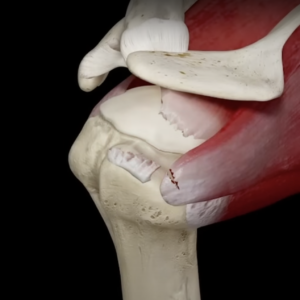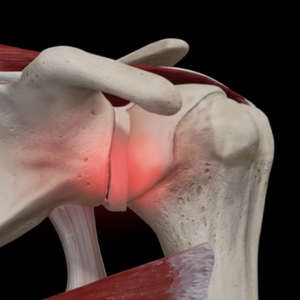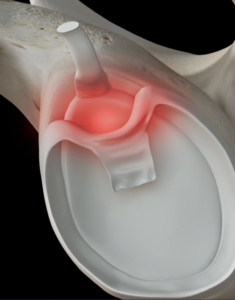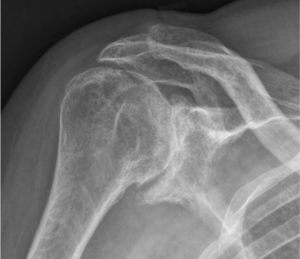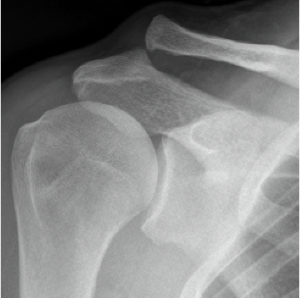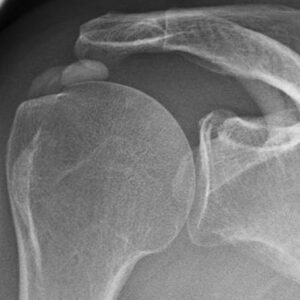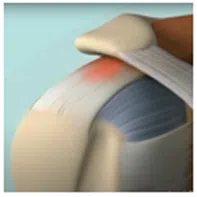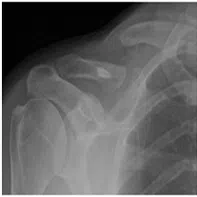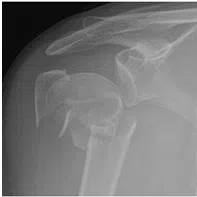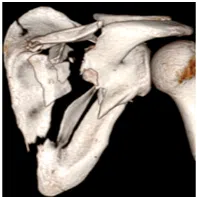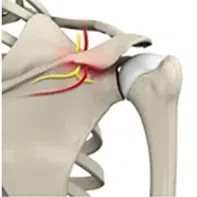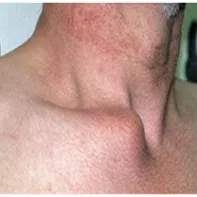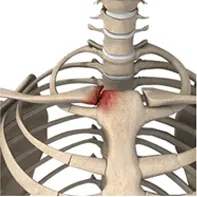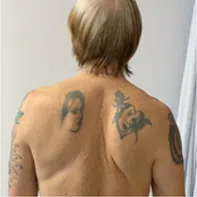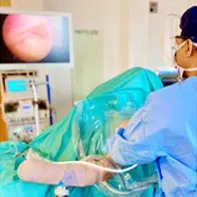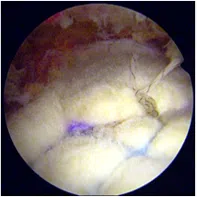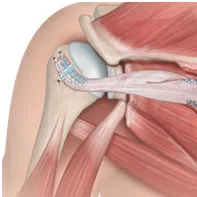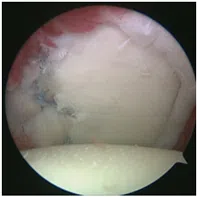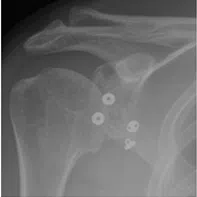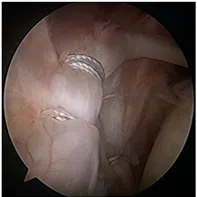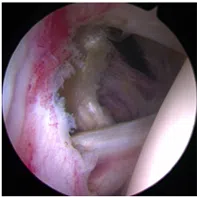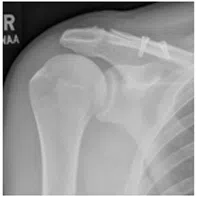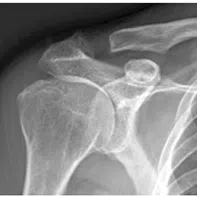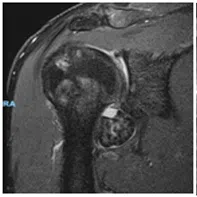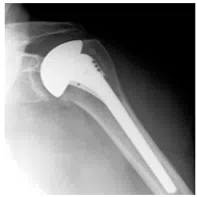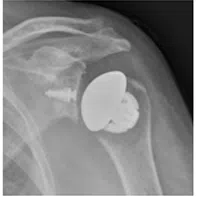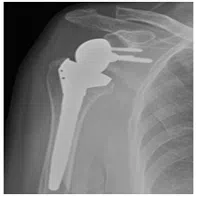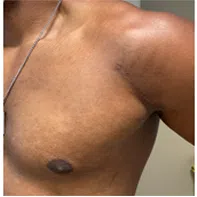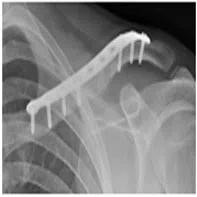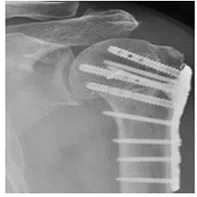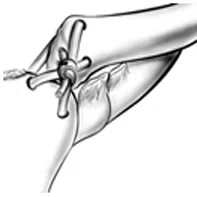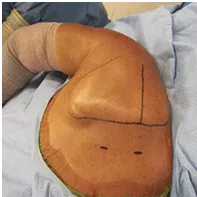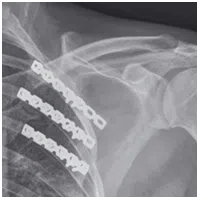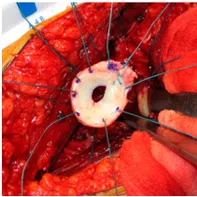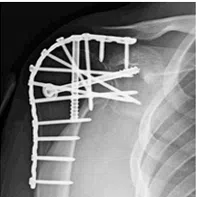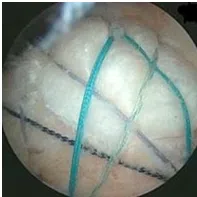
The repair of a tear in the rotator cuff tendons (supraspinatus, infraspinatus, teres minor and subscapularis) is carried out as an all-arthroscopic procedure via tiny incisions over the shoulder. The repair is performed using special devices called suture anchors. Depending on the size of the tear (small to massive rotator cuff tear), it may need a single anchor or up to five-six anchors. When necessary a single-row to double-row repair technique is used to get a robust repair. There is small risk of re-tear of the repaired tendon, this will depend on the quality of the tendon tissue. In the case of poor-quality tendon tissues, our specialists prefer to perform augmented rotator cuff tear, where the repair is augmented with a biological tissue patch to increase the chance of healing (Augmented rotator cuff repair). In some instances a re-tear in the repaired tendon can happen due to injury, in which case, our specialists may recommend revising the repair (Revision rotator cuff repair) to improve shoulder function.
Commonly Asked Questions
When does one need rotator cuff repair?
The rotator cuff repair is performed for tear in the rotator cuff tendon. You will considered a candidate for repair if you have
- severe pain in the shoulder enough to affect your function
- night pain
- poor strength in performing activities
- no improvement with non-operative measures such as physical therapy, injections, painkillers.
What does rotator cuff repair involve?
Rotator cuff repair is performed arthroscopically (key-hole surgery) with stab incision around the shoulder joint (Arthroscopic rotator cuff repair). This procedure is performed under combination of general and regional anaesthesia.
- In this procedure, a camera is introduced into the joint, through which the whole joint is inspected first.
- Following the diagnostic arthroscopy, the torn tendon is freed of adhesions or degenerative tissue and then stitched back to the bone with the synthetic sutures and anchors. The anchors are small hard pellets (usually plastic) with tails of strong suture material that are fired into the bone in the humeral head. The suture tails are passed through the tendon and then tied down. Depending on the tear pattern, the surgeon may opt for single row or double row repair.
- The operation will also involve removing some bone from the underside of the bony arch (acromion) which is positioned just above the rotator cuff tendons (Subacromial decompression). This prevents the bony arch from rubbing on the tendons and repair when the shoulder is moving.
One may also need
- removal of the biceps tendon from the shoulder (Biceps tenotomy or Biceps tenodesis)
- removal of the joint between the collar bone and shoulder-blade (Distal clavicle Excision).
How long is the hospital stay?
The patients are usually discharged on the same day of surgery or the next day once they are comfortable.
What are the precautions after surgery?
Following surgery, you will be advised post op rehabilitation where a sling will be applied to support the arm for 4-6 weeks along with supervised exercise regimen under guidance of a physiotherapist which starts the next day of surgery.
How long does it take to get back to normal?
Usually the patients would be able to move their shoulder freely without pain in about 2 to 3 months. However, the strength in the shoulder takes almost 4-6 months to improve.
What are the chances that my shoulder will be normal after surgery?
Vast majority of the patients will get their shoulder back to normal following surgery and rehabilitation. We do see some complications such as stiff shoulder or re-tear of the repaired tendon, fortunately, they occur in only small percentage of patients. This again depends on multiple factors such as the extent of the tear or the chronicity of symptoms, the quality of tendons, age, quality of bone, and how well one has followed the rehabilitation program. Moreover, not all the patients with re-tear need a revision surgery. Even with re-tear patients will gain benefit from the operation as the shoulder will be much less painful although one may not regain all your strength.
To know more about Rotator cuff tear, please go to ‘Rotator Cuff Tear’ in ‘Conditions’ section
-
Rotator cuff Tear
-
Shoulder Instability or dislocation or labral tear
-
SLAP tear
-
Shoulder arthritis
-
Acromio-clavicular joint arthritis
-
Acromio-clavicular joint dislocation
-
Calcific tendinitis
-
Frozen shoulder
-
Biceps tendonitis or Proximal biceps rupture
-
Shoulder Impingement
-
Pectoralis major tendon tear
-
Collarbone (Clavicle) fracture
-
Upper arm bone (Humerus) fracture
-
Shoulder blade (Scapula or Glenoid) Fracture
-
Suprascapular nerve compressive neuropathy or entrapment
-
Sterno-clavicular joint instability
-
Sterno-clavicular joint arthritis
-
Snapping scapula syndrome
-
Scapula dyskinesis
-
Winged scapula
-
Shoulder arthroscopy
-
Arthroscopic rotator cuff repair
-
Superior capsular reconstruction
-
Tendon transfer
-
Biceps tendonitis or Proximal biceps rupture
-
Labral repair – Bankart/ Posterior labral repair
-
Arthroscopic latarjet
-
Arthroscopic bone block procedure (anterior/ posterior)
-
SLAP repair
-
Arthroscopic excision of calcific deposits
-
Arthroscopic capsular release
-
Arthroscopic ACJ repair/ reconstruction
-
Arthroscopic distal clavicle excision
-
Comprehensive arthroscopic management (CAM)
-
Hemiarthroplasty
-
Total anatomic shoulder replacement
-
Reverse shoulder replacement
-
Pectoralis major tendon repair
-
Open reduction internal fixation (ORIF) clavicle
-
Open reduction internal fixation (ORIF) humerus
-
Arthroscopic supraspinatus nerve decompression
-
Sterno-clavicular joint procedures (Excision or Reconstruction)
-
Scapulothoracic arthroscopy
-
Scapulothoracic fusion
-
Biologic resurfacing of glenoid
-
Glenohumeral fusion





